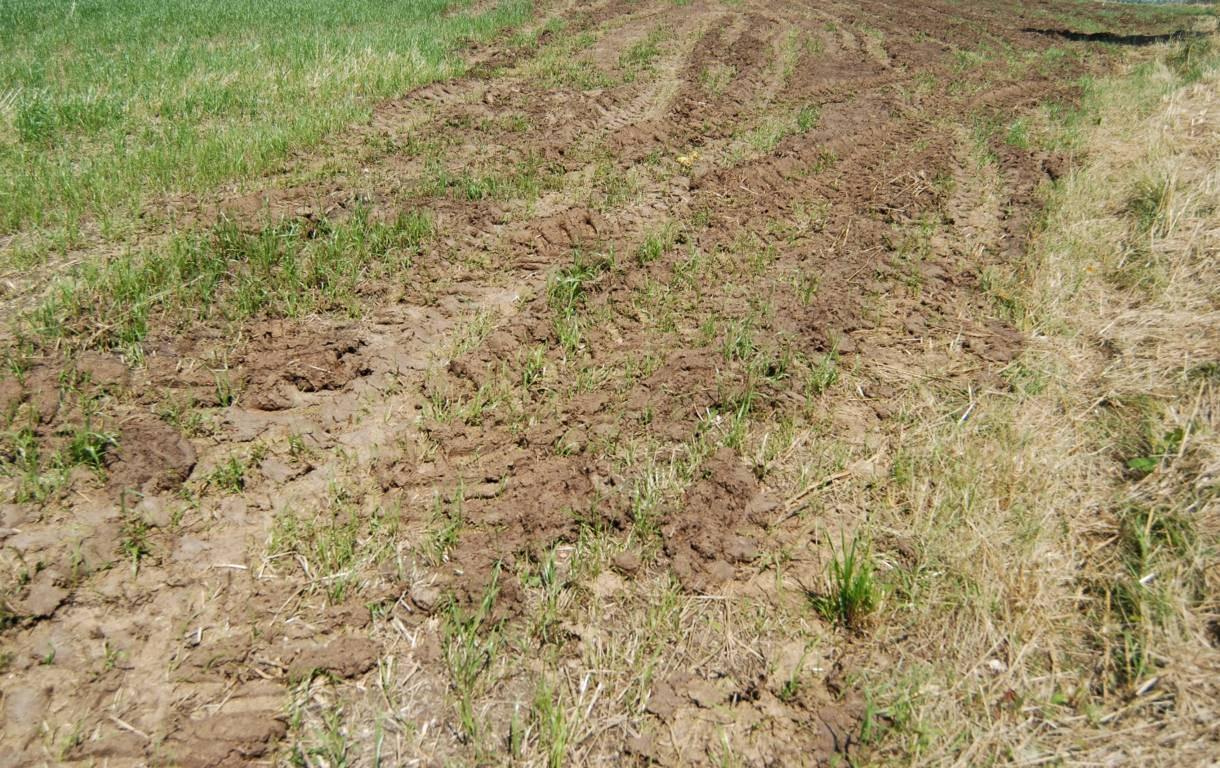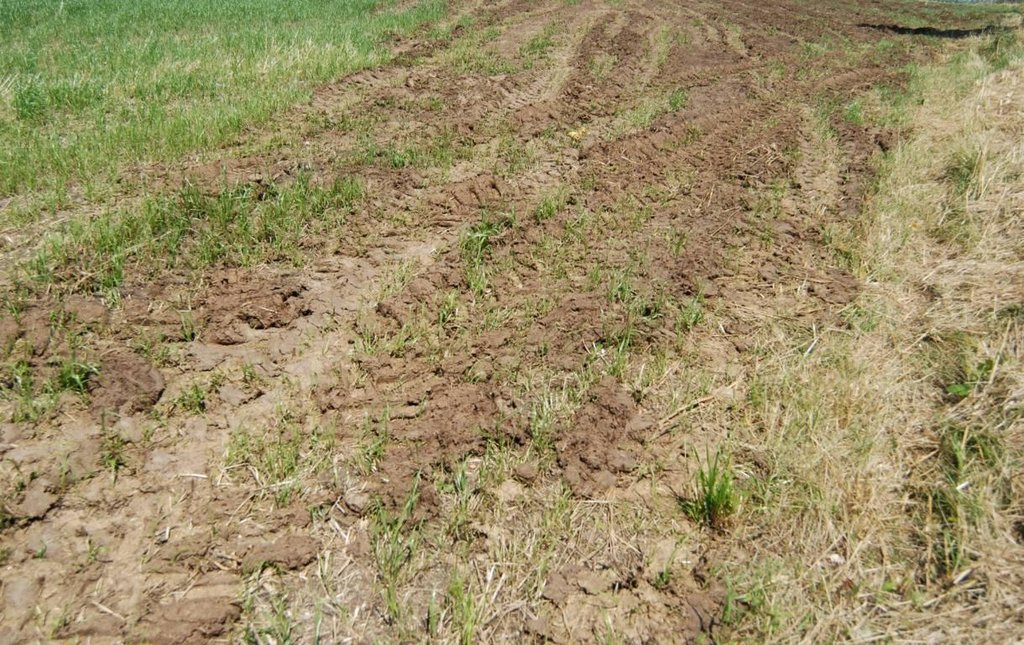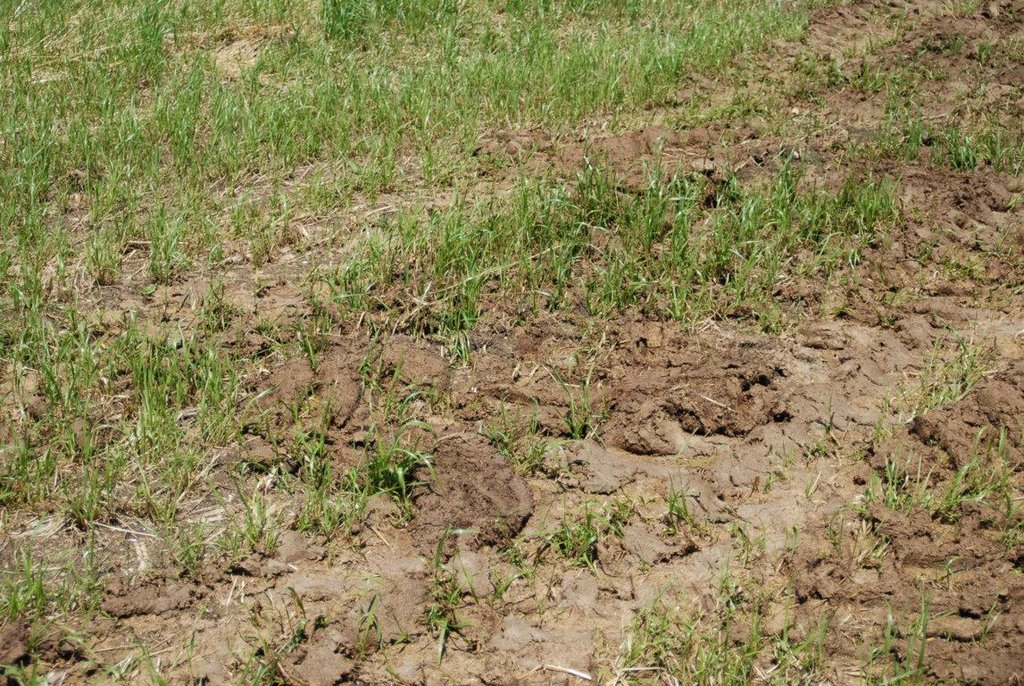Pasture manuring (application of manure from shelter) [意大利]
- 创建:
- 更新:
- 编制者: Velia De Paola
- 编辑者: –
- 审查者: Fabian Ottiger, Alexandra Gavilano
technologies_1209 - 意大利
查看章节
全部展开 全部收起1. 一般信息
1.2 参与该技术评估和文件编制的资源人员和机构的联系方式
SLM专业人员:
Salvia Rosanna
University of Basilicata
意大利
SLM专业人员:
Quaranta Giovanni
University of Basilicata
意大利
有助于对技术进行记录/评估的项目名称(如相关)
Catastrophic shifts in drylands (EU-CASCADE)有助于对技术进行记录/评估的机构名称(如相关)
University of Basilicata - 意大利1.3 关于使用通过WOCAT记录的数据的条件
编制者和关键资源人员接受有关使用通过WOCAT记录数据的条件。:
是
2. SLM技术的说明
2.1 技术简介
技术定义:
Application of manure in valuable pastures to increase grass recover and reduce shrub encroachment
2.2 技术的详细说明
说明:
This is a technique used on animal husbandry farms with either deep litter housing systems (sheep and goat manure) or manure heaps (cattle manure). Manure spreading is carried out twice a year but on different land.
In the case of deep litter housing systems fresh straw is continuously spread over soiled litter in layers. After around six months the deep litter bedding is removed and mechanically spread on pasture lands or arable land.
In the case of cattle farms animal waste is transferred daily to the farm’s manure heap where it is left to decompose for at least a year. Also in this case straw is added for the animals’ comfort and hygiene and is added to the manure heap together with faeces.
Once the manure is ready it is spread on areas of land which can be farmed using mechanical means In the case of arable cropland manure is immediately buried by ploughing, in the case of pasture land it is spread at the beginning of autumn and left on the surface without ploughing (if not occasionally a harrow might be used to break down the manure to increase even distribution and penetration).
Purpose of the Technology: Increase growth of palatable species, increase value of grazing area
Natural / human environment: The technique is an agronomic measure which is applied on meadows, pastures and cropland in an area with a sub-humid climate, moderate scope and shallow clayey soil.
As to the context of production, it is characterised by a medium level of mechanisation (only the most demanding operations are carried out using mechanical means), the production system is essentially mixed, a small part is destined for personal consumption whilst the bulk of production is destined for local markets. The property is predominantly privately owned but also includes some public land, especially in the case of pasture land. Most farms in the area are livestock farms whilst the agricultural component is destined exclusively for private consumption.
2.3 技术照片
2.5 已应用该技术的、本评估所涵盖的国家/地区/地点
国家:
意大利
区域/州/省:
Basilicata
有关地点的进一步说明:
Castelsaraceno
具体说明该技术的分布:
- 均匀地分布在一个区域
如果不知道精确的区域,请注明大致覆盖的区域:
- 0.1-1 平方千米
2.6 实施日期
如果不知道确切的年份,请说明大概的日期:
- 50多年前(传统)
2.7 技术介绍
详细说明该技术是如何引入的:
- 作为传统系统的一部分(> 50 年)
3. SLM技术的分类
3.2 应用该技术的当前土地利用类型
同一土地单元内混合使用的土地::
是
具体说明混合土地使用(作物/放牧/树木):
- 农牧业(包括农牧结合)

农田
- 一年一作
每年的生长季节数:
- 1
具体说明:
Longest growing period in days: 120 Longest growing period from month to month: March to august

牧场
粗放式放牧:
- 半游牧畜牧业
- 经营牧场
动物类型:
- 山羊
- 绵羊
- cows
注释:
Major land use problems (compiler’s opinion): Decrease of value of pastures due to under grazing and shrub encroachment
Major land use problems (land users’ perception): Decrease of value of pastures due to under grazing and shrub encroachment
Semi-nomadism / pastoralism: Shepherds use the area for summer grazing and move downhill in winter
Mixed: (eg agro-pastoralism, silvo-pastoralism): A reduced number of farmers cultivate their field for fodder and pastures
Grazingland comments: Sheep and goats are the most valuable livestock
Type of grazing system comments: Sheep and goats are the most valuable livestock
Livestock density (if relevant): > 100 LU /km2
3.4 供水
注释:
Water supply: rainfed, mixed rainfed - irrigated
3.5 该技术所属的SLM组
- 土壤肥力综合管理
3.6 包含该技术的可持续土地管理措施

农艺措施
- A2:有机质/土壤肥力
注释:
Main measures: agronomic measures
Type of agronomic measures: manure / compost / residues
3.7 该技术强调的主要土地退化类型

生物性退化
- Bs:质量和物种组成/多样性的下降
- Bl:土壤寿命损失
注释:
Main type of degradation addressed: Bs: quality and species composition /diversity decline
Secondary types of degradation addressed: Bl: loss of soil life
Main causes of degradation: other human induced causes (specify) (Undergrazing, decrease in land use and land management), labour availability (Between 1970m and 1980 industrial activities in the region pushed people to abandon farming activities)
Secondary causes of degradation: population pressure (The change in the economic activity induced a massive depopulation)
3.8 防止、减少或恢复土地退化
具体数量名该技术与土地退化有关的目标:
- 防止土地退化
4. 技术规范、实施活动、投入和成本
4.1 该技术的技术图纸
技术规范(与技术图纸相关):
Technical knowledge required for land users: moderate
Secondary technical functions: increase in organic matter, promotion of vegetation species and varieties (quality, eg palatable fodder)
Manure / compost / residues
Material/ species: Litter from stable and organic component
4.2 有关投入和成本计算的一般信息
其它/国家货币(具体说明):
euro
如相关,注明美元与当地货币的汇率(例如1美元=79.9巴西雷亚尔):1美元=:
0.74
注明雇用劳工的每日平均工资成本:
81.08
4.5 维护/经常性活动
| 活动 | 时间/频率 | |
|---|---|---|
| 1. | Emptying of deep litter bedding or manure hap | 2 per year |
| 2. | Spreading of manure on 3 hectares of pasture land | 2 per year |
| 3. | Hire of manure spreader | 2 per year |
4.6 维护/经常性活动所需要的费用和投入(每年)
| 对投入进行具体说明 | 单位 | 数量 | 单位成本 | 每项投入的总成本 | 土地使用者承担的成本% | |
|---|---|---|---|---|---|---|
| 劳动力 | Emptying of deep litter bedding or manure hap | ha | 1.0 | 324.3 | 324.3 | 100.0 |
| 劳动力 | Spreading of manure on 3 hectares of pasture land | ha | 3.0 | 972.9 | 2918.7 | 100.0 |
| 劳动力 | Hire of manure spreader | ha | 1.0 | 283.78 | 283.78 | 100.0 |
| 技术维护所需总成本 | 3526.78 | |||||
| 技术维护总成本,美元 | 4765.92 | |||||
注释:
Machinery/ tools: manure spreader
4.7 影响成本的最重要因素
描述影响成本的最决定性因素:
Assuming that the production of manure (as described above) happens on farm, the critical point of the application of the technique is the availability of equipment for spreading. The largest farms buy the equipment spending from 35,000 to 40,000 euro depending on the machines’ working capacities. The smaller farms (which represent the vast majority) rent this equipment (from third parties) twice a year at an overall cost of around €70 an hour.
5. 自然和人文环境
5.1 气候
年降雨量
- < 250毫米
- 251-500毫米
- 501-750毫米
- 751-1,000毫米
- 1,001-1,500毫米
- 1,501-2,000毫米
- 2,001-3,000毫米
- 3,001-4,000毫米
- > 4,000毫米
有关降雨的规范/注释:
68% in winter and 15% in summer
农业气候带
- 半湿润
Thermal climate class: temperate
5.2 地形
平均坡度:
- 水平(0-2%)
- 缓降(3-5%)
- 平缓(6-10%)
- 滚坡(11-15%)
- 崎岖(16-30%)
- 陡峭(31-60%)
- 非常陡峭(>60%)
地形:
- 高原/平原
- 山脊
- 山坡
- 山地斜坡
- 麓坡
- 谷底
垂直分布带:
- 0-100 m a.s.l.
- 101-500 m a.s.l.
- 501-1,000 m a.s.l.
- 1,001-1,500 m a.s.l.
- 1,501-2,000 m a.s.l.
- 2,001-2,500 m a.s.l.
- 2,501-3,000 m a.s.l.
- 3,001-4,000 m a.s.l.
- > 4,000 m a.s.l.
5.3 土壤
平均土层深度:
- 非常浅(0-20厘米)
- 浅(21-50厘米)
- 中等深度(51-80厘米)
- 深(81-120厘米)
- 非常深(> 120厘米)
土壤质地(表土):
- 细粒/重质(粘土)
表土有机质:
- 中(1-3%)
如有可能,附上完整的土壤描述或具体说明可用的信息,例如土壤类型、土壤酸碱度、阳离子交换能力、氮、盐度等。:
Soil fertility is medium-low
Soil drainage/infiltration is good
Soil water storage capacity is medium
5.4 水资源可用性和质量
地下水位表:
5-50米
地表水的可用性:
中等
水质(未处理):
良好饮用水
关于水质和水量的注释和进一步规范:
Availability of surface water is medium (minimum during month of September and October)
5.5 生物多样性
物种多样性:
- 中等
5.6 应用该技术的土地使用者的特征
生产系统的市场定位:
- 商业/市场
非农收入:
- > 收入的50%
相对财富水平:
- 平均水平
个人或集体:
- 个人/家庭
性别:
- 男人
说明土地使用者的其他有关特征:
Land users applying the Technology are mainly common / average land users
Difference in the involvement of women and men: Active farmers are present only males; women are not actively involved in land management.
Population density: 10-50 persons/km2
Annual population growth: negative; 2%
90% of the land users are average wealthy.
10% of the land users are poor.
Off-farm income specification: Most of the off farm income derives from public sector, i.e. Municipality, Mountain Community, Region and other public bodies. Very few farmer members run local shops or handcraft.
5.7 应用该技术的土地使用者使用的平均土地面积
- < 0.5 公顷
- 0.5-1 公顷
- 1-2 公顷
- 2-5公顷
- 5-15公顷
- 15-50公顷
- 50-100公顷
- 100-500公顷
- 500-1,000公顷
- 1,000-10,000公顷
- > 10,000公顷
这被认为是小规模、中规模还是大规模的(参照当地实际情况)?:
- 小规模的
注释:
15-50 ha (Considering communal land used by farmers)
5.8 土地所有权、土地使用权和水使用权
土地所有权:
- 社区/村庄
- 个人,有命名
土地使用权:
- 社区(有组织)
- 个人
5.9 进入服务和基础设施的通道
健康:
- 贫瘠
- 适度的
- 好
教育:
- 贫瘠
- 适度的
- 好
技术援助:
- 贫瘠
- 适度的
- 好
就业(例如非农):
- 贫瘠
- 适度的
- 好
市场:
- 贫瘠
- 适度的
- 好
能源:
- 贫瘠
- 适度的
- 好
道路和交通:
- 贫瘠
- 适度的
- 好
饮用水和卫生设施:
- 贫瘠
- 适度的
- 好
金融服务:
- 贫瘠
- 适度的
- 好
6. 影响和结论性说明
6.1 该技术的现场影响
社会经济效应
生产
饲料生产
SLM之前的数量:
8t/ha
SLM之后的数量:
11t/ha
饲料质量
注释/具体说明:
The quality of the fodder increases due to the increase of protein content.
水资源可用性和质量
灌溉用水需求
收入和成本
农业收入
注释/具体说明:
Net return from this activity increases due to yield increases.
社会文化影响
健康状况
冲突缓解
Improved livelihoods and human well-being
生态影响
水循环/径流
地表径流
土壤
土壤水分
土壤流失
土壤结壳/密封
土壤压实
养分循环/补给
土壤有机物/地下C
生物多样性:植被、动物
生物量/地上C
植物多样性
有益物种
栖息地多样性
害虫/疾病控制
减少气候和灾害风险
碳和温室气体的排放
其它生态影响
Benefits from soil ecology
注释/具体说明:
The application of manure increases the soil organic matter content. As The application of manure increases the soil organic matter content. As well known the increases in organic matter content turns in important benefits from the soil ecology.
6.2 该技术的场外影响已经显现
旱季稳定可靠的水流
注释/具体说明:
The application of manure due to its beneficial effects on soil parameters, allows to keep grass and crops healty along the year so protecting soil. Poor soils , without manure application, can not sustaine grasses all over the year making it at erosion
下游洪水
注释/具体说明:
The application of manure due to its beneficial effects on soil parameters, allows to keep grass and crops healty along the year so protecting soil. Poor soils , without manure application, can not sustaine grasses all over the year making it at erosion
缓冲/过滤能力
注释/具体说明:
The application of manure due to its beneficial effects on soil parameters, allows to keep grass and crops healty along the year so protecting soil. Poor soils , without manure application, can not sustaine grasses all over the year making it at erosion
6.3 技术对渐变气候以及与气候相关的极端情况/灾害的暴露和敏感性(土地使用者认为的极端情况/灾害)
渐变气候
渐变气候
| 季节 | 增加或减少 | 该技术是如何应对的? | |
|---|---|---|---|
| 年温度 | 增加 | 好 |
气候有关的极端情况(灾害)
气象灾害
| 该技术是如何应对的? | |
|---|---|
| 局地暴雨 | 好 |
| 局地风暴 | 好 |
气候灾害
| 该技术是如何应对的? | |
|---|---|
| 干旱 | 好 |
水文灾害
| 该技术是如何应对的? | |
|---|---|
| 比较和缓的(河道)洪水 | 好 |
其他气候相关的后果
其他气候相关的后果
| 该技术是如何应对的? | |
|---|---|
| 缩短生长期 | 好 |
6.4 成本效益分析
技术收益与技术维护成本/经常性成本相比如何(从土地使用者的角度看)?
短期回报:
中性/平衡
长期回报:
中性/平衡
6.5 技术采用
在所有采用这项技术的人当中,有多少人是自发的,即未获得任何物质奖励/付款?:
- 91-100%
注释:
10% of land user families have adopted the Technology with external material support
Comments on acceptance with external material support: Part of the implementing farms have adopted the technology thanks to support in buying ad hoc machinery
90% of land user families have adopted the Technology without any external material support
There is a little trend towards spontaneous adoption of the Technology
Comments on adoption trend: High cost of fuel are reducing the rate of adoption given the high machinery requirements
6.7 该技术的优点/长处/机会
| 土地使用者眼中的长处/优势/机会 |
|---|
|
It’s the only natural way to fertilize pasture and croplands. This avoids the use of chemical fertilizers and external inputs. This also provides great beneficial effects on the milk/meat quality through better grass. How can they be sustained / enhanced? Providing subsides both to machinery and organic production |
| 编制者或其他关键资源人员认为的长处/优势/机会 |
|---|
|
The farms try to concentrate their activities and so they try to improve local (close by) pastureland. The technology increases the grass productivity and so helping farms to reduce time of grazing. How can they be sustained / enhanced? Supporting ad hoc machinery and equipment. |
6.8 技术的弱点/缺点/风险及其克服方法
| 土地使用者认为的弱点/缺点/风险 | 如何克服它们? |
|---|---|
| This is considered as a heavy work (mainly dirty). The use of machinery is the only way to implement it | No way |
| 编制者或其他关键资源人员认为的弱点/缺点/风险 | 如何克服它们? |
|---|---|
| The technology is difficult to apply on very steep slope lands | No way |
链接和模块
全部展开 全部收起链接
无链接
模块
无模块




